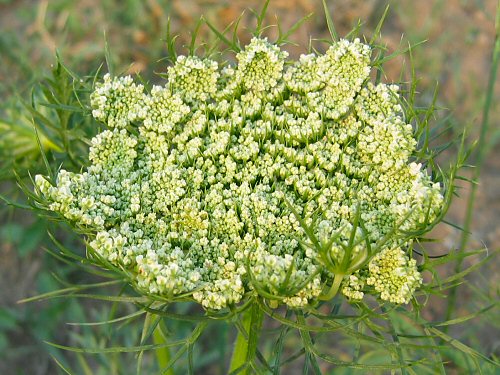
This is where those tiny, slow-to-germinate carrot seeds come from! For leaf and root crops, you often have to go out of your way in the veggie garden to see first-hand how exactly their seeds are produced—the crop is harvested and eaten before the flowering stage starts. Carrots are biennials, they go to seed only in their second year, so unless you’re seed-saving, or accidentally leave some behind over the winter (as we did here), the entire flowering process will remain a garden mystery. For carrots, if it was a mystery, no longer…!




When I was living in coastal Oregon last year I saw these beautiful white flowers popping up in the springtime–wasn’t sure what they were; after a little research it turns out they were wild carrots–the original species from Eurasia…they’ve naturalized in the U.S.–even found them in Texas this year.
Have the carrots, second year…..beautiful flowers….what next?
Pick them, dry them….??
Can I use the seeds next year in my veggie patch!
Sonya: I haven’t saved carrot seed, but from the books, here’s the basic info. First of all, you have to be sure that your seed is worth saving! That means an open-pollinated variety, and separation from other varieties of carrots so the seed will be true. Carrots are insect-pollinated and cross with other carrot varieties and with Queen Anne’s Lace, which is generally considered a weed. A minimum1000′ (305m) separation from other varieties is recommended. And, most carrot varieties from the regular seed catalogs are hybrids, and you can’t save seed from them, you need open-pollinated varieties. If you do have an isolated, open-pollinated variety, then you wait until the seeds are fully mature, harvest the seed heads, let them dry out, then separate out the seed and you shold be ready to go. Hope that helps!